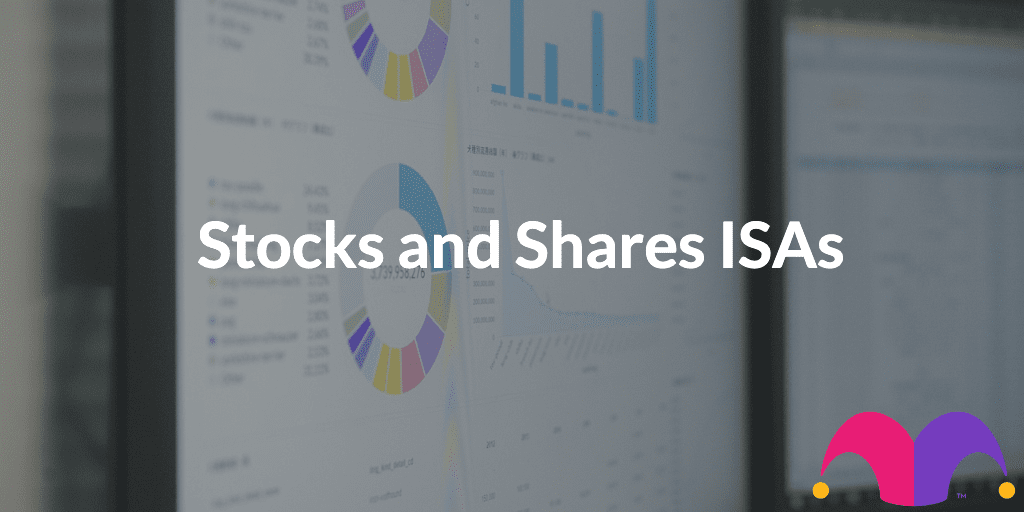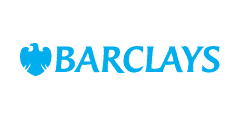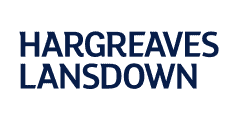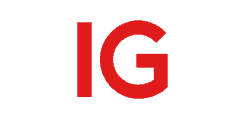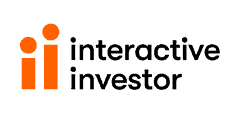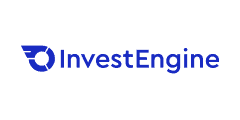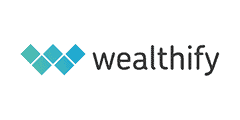On this page, you’ll find out about how stocks and shares ISAs work, and some detailed information on a selection of available platforms. You’ll also learn details on the fees you might encounter and how you can start deciding which account is right for you.
Risk Warning: Investments involve various risks and you may get back less than you put in. Tax benefits depend on individual circumstances and tax rules, which could change. Click here to learn more.
The Motley Fool’s Featured Stocks and Shares ISAs
Good for beginner investors looking to invest in funds or shares
Barclays Investment ISA *
| Trading Commission | From £0‡ |
| Account Management Fee | 0.25% p.a. |
- Pros & Cons
- Fees & Charges
Pros
- Low-cost investing, with no charge to buy or sell funds
- Huge choice of investments
- Easy for beginners
Cons
- £50 minimum investment to create portfolio
- Expensive to hold large portfolios of equities, compared to peers
- Barclays current account required if you want to use the Barclays app to manage your investments
Platform Fees:†
Monthly subscription fee: 0.25% per annum
Shares custody charge: covered by subscription fee
Fund custody charge: covered by subscription fee
Dealing Fees‡:
UK shares & ETFs: £6 (no charge for automated regular investments)
US shares: £6
European shares: £6
Fund trades: £0 (no charge for automated regular investments)
Spot + FX fees: tapered from 1% to 0.1% (depends on trade value)
Telephone dealing charge: £25
Great for frequent investors or those who prefer funds
Hargreaves Lansdown Stocks and Shares ISA *
| Trading Commission | £5.95 – £11.95‡ |
| Account Management Fee | Up to 0.45%† |
- Pros & Cons
- Fees & Charges
Pros
- Plenty of investing resources and research material
- Cheap trading costs for active investors and free fund dealing
- Low platform fees for smaller portfolios
- £100 of free trades for new and existing clients.
Cons
- Expensive fees for fewer trades
- Structure of fees can be complicated
- Limited trading tools
Monthly subscription fee: £0
Equities custody charge: 0.45% (capped at £45/year)
Fund management charge:
On the first £0 to £250,000 = 0.45%,
On the value between £250,000 to £1m = 0.25%,
On the value between £1m and £2m = 0.1%,
On the value over £2m = free
UK shares & ETFs: £11.95 (for 0-9 trades in previous month), £8.95 (for 10-19 trades in previous month), £5.95 (for 20+ trades in previous month)
US shares & ETFs: £11.95 (for 0-9 trades in previous month), £8.95 (for 10-19 trades in previous month), £5.95 (for 20+ trades in previous month)
EU shares & ETFs: £11.95 (for 0-9 trades in previous month), £8.95 (for 10-19 trades in previous month), £5.95 (for 20+ trades in previous month)
Fund trades: £0
Spot + FX fees: 1%
Telephone dealing charge: 1% of trade value (£20 min/£50 max)
Great for active investors and experienced traders who want lots of choice
IG Stocks and Shares ISA *
| Trading Commission | £8.00‡ |
| Account Management Fee | £8.00† |
- Pros & Cons
- Fees & Charges
Pros
- Lots of trading tools and large choice of investments
- Low commissions for active investors
- Great learning materials
Cons
- Expensive for less frequent or inactive investors
- Strong emphasis on trading over long-term investing
- Platform can be difficult to use
Platform Fees:†
Monthly subscription fee: £0.00
Equities custody charge: £8.00/month, or £0.00 if you trade more than 3 times per quarter
Fund management charge: N/A
Dealing Fees:‡
UK shares & ETFs: £8.00 if you place 0-2 trades in the previous month, £3.00 if you place 3 or more
US shares & ETFs: £10.00 if you place 0-2 trades in the previous month, £0.00 if you place 3 or more
EU shares & ETFs: 0.1% trade value (€10.00 minimum)
Fund trades: See the Exchange Traded Funds (ETFs) commission rates above. (Units trusts and OEICs are not supported)
Spot + FX fees: 0.5%
Telephone dealing charge: £40.00 for UK shares, £50.00 for US shares
Good for long-term, cost-conscious investors who want lots of flexibility
Interactive Investor Stocks and Shares ISA *
| Trading Commission | From £3.99‡ |
| Account Management Fee | From £4.99† |
- Pros & Cons
- Fees & Charges
Pros
- Very cheap trading costs
- Flat-rate platform fee structure
- Inclusive free trades with some plans
Cons
- No dealing fee discount for frequent trading
- Some plans can be expensive for smaller portfolios
- Limited trading tools
Interactive Investor offers three different subscription plans – these are easy to switch between at a later date, should circumstances change.
Investor Essentials plan
Platform Fees:†
Monthly subscription fee: £4.99
Equities custody charge: covered by subscription fee
Fund management charge: covered by subscription fee
Note: the ‘Investor Essentials’ plan has a £50,000 investment limit; if this is exceeded the account will automatically be upgraded to the ‘Investor’ plan.
Dealing Fees‡:
UK shares & ETFs: £3.99
US shares: £3.99
Other international shares: £9.99
UK fund trades: £3.99
Investor plan
Platform Fees:†
Monthly subscription fee: £11.99
Equities custody charge: covered by subscription fee
Fund management charge: covered by subscription fee
Dealing Fees‡:
A monthly dealing credit, worth £3.99, is included as part of the account subscription and is valid for 31 days. (Equivalent to 1 free trade per month).
Additional trades are charged as follows:
UK shares & ETFs: £3.99
US shares: £3.99
Other international shares: £9.99
UK fund trades: £3.99
Super Investor plan
Platform Fees:†
Monthly subscription fee: £19.99
Equities custody charge: covered by subscription fee
Fund management charge: covered by subscription fee
Dealing Fees‡:
A monthly dealing credit, worth £7.98, is included as part of the account subscription and is valid for 31 days. (Equivalent to 2 free trades per month).
Additional trades are charged as follows:
UK shares & ETFs: £3.99
US shares: £3.99
Other international shares: £5.99
Fund trades: £3.99
Applicable to all plans
Regular investing service: free to use (£25 minimum investment amount, no dealing fees)
Spot + FX fees: 1.5%
Telephone dealing charge: £49
Note: For UK and US trades over £100,000, and other International share trades over £25,000 additional fees and charges apply. (See the Interactive Investor website for full details.)
Robo-Investing Stocks and Shares ISA Platforms
Good for investors seeking a low-cost, fully managed solution
IG Smart Portfolios *
| Account Management Fee | 0.50% – capped at a maximum of £250 per year. |
- Pros & Cons
- Fees & Charges
Pros
- Choice of five investment profiles, ranging from conservative to aggressive
- BlackRock designed asset-allocation, using ETFs
- Automatic portfolio rebalancing
Cons
- £500 minimum initial investment
- No ‘DIY’ option – you can’t invest directly in specific ETFs
- IG’s platform can feel challenging to navigate, compared to offerings from ‘pure-play’ robo-brokers
Annual Platform Fee:
- On the first £0 to £50,000 = 0.50%
- On the value over £50,000 = free
- (This effectively caps the management fee at £250 per year)
Average Fund Costs: 0.13%
- Fund costs can vary over time as they are dependent on the funds used to construct the portfolio and the relative performance of each fund held within the portfolio.
Transaction Costs: 0.09%
- Transaction costs occur when funds are bought and sold to rebalance an IG Smart Portfolio. IG’s estimates this to be 0.09% based on a 100% portfolio turnover. (IG claims turnover has typically been less than 100% since Smart Portfolios launch in February 2017.)
Great for investors who want a simple and affordable experience
InvestEngine Stocks and Shares ISA *
| Account Management Fee |
|
- Pros & Cons
- Fees & Charges
- Sign-up Offer
Pros
- Extremely cheap platform
- Choice of managed portfolio or DIY
- Huge selection of ETFs
Cons
- £100 minimum investment to create portfolio
- No trading tools
- No ethical ready-made portfolios
Annual Platform Fee:
- 0.25% for the managed portfolio service.
- No fee for the DIY service
Average Fund Costs: 0.23%
IMPORTANT NOTE: if you click on the links below to read the offer terms and conditions, make sure you return to this page and click on the Apply Now button to ensure the sign-up offers listed below get applied to your InvestEngine application.
SIGN-UP OFFER: open an InvestEngine account through The Motley Fool UK and you’ll get an investment bonus of between £10 & £50 when you sign up and deposit £100 (T&Cs apply)
- This offer is for new InvestEngine customers, and only applies to one Portfolio per customer.
- View the full terms and conditions for this offer.
ISA BONUS OFFER: top-up or transfer to InvestEngine by 6pm on 31/05/24 and receive a bonus of up to £2,500 (capital at risk, T&Cs apply)
Great for investors who want more control over their investment funds
Moneybox Stocks and Shares ISA*
| Account Management Fee |
|
- Pros & Cons
- Fees & Charges
Pros
- £1 minimum investment to create portfolio
- Choice of managed portfolio, or DIY with custom allocations
- Socially Responsible choice for each Starting Option
Cons
- £1 monthly fee (free for first 3 months)
- Limited choice of US stocks available for S&S ISA
Annual Platform Fee:
- Equivalent to £12 (£1 per month – free for the first three months)
- 0.45% (charged monthly)
Average Fund Costs: 0.12% – 0.58% (charged directly by fund providers, inclusive of transaction costs)
Currency Conversion Fee: 0.45% (cost of converting GBP to USD and vice versa when buying or selling US stocks)
For investors looking for a straightforward way to invest
Wealthify Stocks and Shares ISA *
| Account Management Fee | 0.6% |
- Pros & Cons
- Fees & Charges
Pros
- Open an account from just £1
- Cheap, simple, and transparent fees
- Easy-to-use platform
Cons
- Small selection of ready-made portfolios
- Not much control over your portfolio
- Cheaper platforms available
Ready-made Original Plans
Annual Platform Fee: 0.6%
Average Fund Costs: 0.16%
Ready-made Ethical Plans
Annual Platform Fee: 0.6%
Average Fund Costs: 0.7%
Risk Warning
Investments involve various risks, and you may get back less than you put in. Tax benefits depend on individual circumstances and tax rules, which could change.
The value of your investments can go down as well as up and you may not get back all the money you put in. All investments carry a varying degree of risk and it’s important you understand the nature of these risks. Remember that taxes can be complicated and the tax benefits of these products depends on your personal circumstances. Tax rules are subject to change. The Motley Fool believes in building wealth through long-term investing and so we do not promote or encourage high-risk activities including day trading, CFDs, spread betting, cryptocurrencies, and forex. Click here to learn more.
What is a stocks and shares ISA?
A stocks and shares ISA (individual savings account) is a tax-free investment account that allows you to invest your savings up to a certain allowance each year. This can include individual shares, investments funds, bonds, and a whole host of other options (depending on the platform you use).
Using a stocks and shares ISA can be a terrific way of investing for your future because it gives you hugely generous tax advantages that you won’t find in a general investment account.
Any money held inside the wrapper is shielded from tax on things like dividend and capital gains tax. This can help turbo-charge your overall investment returns throughout your lifetime.How do stocks & shares ISAs work?
Simply put, a stocks and shares ISA is a type of savings account that you can use to invest and potentially earn a return. You can use your ISA allowance to buy shares in listed companies each tax year, resulting in potential profits earned from the equities.
Any UK tax resident over 18 can hold an account. You have plenty of options to choose from when it comes to deciding where to hold your ISA and different platforms will suit different types of investors.
Whether you want complete control over your investments and lots of choice, or if you would prefer fewer options and an easy-to-use interface, there is a stocks and shares ISA for you.
What makes a good Stocks and Shares ISA account?
There are four elements that separate the mediocre stocks and shares ISA accounts from the best ones:
- Low fees
- Easy to use
- Helpful account features
- Wide selection of investments
For different investors, the order of importance of each element could vary. But, if you focus on finding a platform with a combination of these elements, you’ve likely found yourself a fantastic account.
Let’s take a look at each factor:
1. Low fees
When it comes to fees, aim to keep them as low as possible. The main fees to consider are the ongoing platform fees, trading fees, and fund custody fees. Understanding the total costs is important because this will have an impact on your long-term returns. So, make sure you understand all the charges when looking into a platform.
2. Easy to use
To determine the ease of use of a platform, you can sometimes sign up for a sample account with a broker. If that’s not possible, you can simply navigate around the broker’s main website. If the main website is difficult and unhelpful to find your way around, then it’s likely the accounts may not be especially user friendly either.
3. Helpful account features
The features that tend to matter most in stocks and shares ISA accounts are: news, research, and tools. There are free resources online for all three of these. But, for some investors, having news and research directly in their account is useful. These tools can also help you narrow down the options when looking for investments..
4. Wide selection of investments
Finally, it’s ideal if your stocks and shares ISA platform has a wide selection of investments. Even if you plan to invest in simple funds, your strategy could evolve as you learn more about investing. For those of you looking for individual shares across different markets, it’s vital to have a large choice of options available to create a well-diversified investment portfolio.
When can you invest in a Stocks and Shares ISA?
The annual ISA allowance is yours on a ‘use it or lose it’ basis. It expires at midnight on 5 April each year, and if you haven’t used it by then, you lose the allowance for good. However, if you miss the deadline, your new allowance kicks in the very next day, on 6 April.
Waiting could be a mistake, though. We all have our long to-do lists, but you don’t want to let saving for retirement fall to the bottom of that list. The sooner you start the better, as that way your money has much longer to grow.
How much can you invest in an ISA?
Currently, you can invest up to £20,000 into your stocks and shares ISA account during the 2023/2024 tax year. This has been the limit for a number of years, but it could change and be made either higher or lower in the future.
Therefore, it’s well worth trying to make the most of your ISA allowance each tax year because they may not be there forever. And any unused allowance does not get carried over into the following year.
Fees on stocks and shares ISAs
Here’s a quick breakdown of the different types of fees you may encounter when you’re searching for the best stocks and shares ISA accounts:
- Platform fee – It’s hard to find a stocks and shares ISA provider that doesn’t charge an ongoing account fee. This could be a flat monthly amount or an annual fee that is charged as a percentage of your holdings. So how much you have in your account could determine which option works out cheaper for you.
- Trading fees – Every time you buy or sell an investment in your stocks and shares ISA, you may have to pay a trading fee or commission charge. The lower the better, as that means more money will stay (and hopefully grow) in your account.
- Fund custody charges – In addition to a platform fee, some brokers charge a fund manager fee for holding investment funds in your account. It is possible to find accounts that don’t charge a fee. So, if investment funds are a big part of your strategy, the best stocks and shares ISA might be an account that doesn’t charge you a custody fee.
- International dealing charge – If you do use an account that lets you buy overseas shares, platforms may charge a foreign exchange (FX) conversion rate to buy international investments. This is often a fairly low percentage of the transaction, but it can make a big difference if you plan on buying lots of overseas investments.
What is the best performing stocks and shares ISA?
The stocks and shares ISA is just a type of account. So, judging how well a stocks and shares ISA account performs will be based purely on the investments held within the account.
You can give yourself the best chance of seeing strong performance by looking for an account with low fees and lots of choice. Because, if you put two ISA accounts head-to-head and chose the exact same investments, the account with the lowest fees would be the one that ends up performing the best.
A great account will increase the likelihood you’ll be successful, but ultimately, the best performing stocks and shares ISAs will depend on the quality of investments you put into your account.
Which type of stocks and shares platform should you choose?
One of the first decisions you’ll make before opening your account is whether you want to pick all your investments yourself (DIY) or if you’d like some ready-made portfolio options. Each has their own benefits and drawbacks:
DIY portfolio
If you go down this route, you will shoulder all the responsibility for choosing your investments and managing the portfolio. This can be great fun, and means you have total control. But, it also means you have to make all the decisions. Having to do this might not be enjoyable for everyone because of the added pressure of researching and monitoring your investments. But for those who have the time and are interested in the world of investing, this can be a cheaper way to invest.
Ready-made portfolio
This is where you basically hand over control of your investment selections. Doing this can lead to higher fees, but it does mean that the platform uses experts or an algorithm to choose your investments. The ready-made option is good for beginners and those who don’t want to spend time building and maintaining an investment portfolio.
Some platforms will give the choice to use either option in your stocks and shares ISA account. This can be good for those who may want to start out with a ready-made portfolio and then progress to a DIY style once you feel more comfortable.
You can always try out different methods. So, don’t feel like choosing ready-made or DIY is setting your strategy in stone. You can always adjust your approach or move accounts if you want to.
How to open a stocks and shares ISA
The process of opening a stocks and shares ISA will vary depending on what platform you choose.
Most providers will allow you to open an account on their website or through a dedicated app on your phone. However, some will also let you call up and open your account over the phone. And if you were to open an account with a bank, they sometimes let you arrange an account in-branch.
Opening a stocks and shares ISA account is often a very smooth process and other than some basic personal information, your National Insurance (NI) number is usually the only additional thing to provide.
If you find the process difficult or frustrating, it may be worth considering a different provider. Because, an unnecessary complex account opening procedure could be a signal that the platform won’t be easy to use.
Are stocks and shares ISAs covered by the Financial Services Compensation Scheme (FSCS)?
If your stocks and shares ISA provider is regulated by the Financial Conduct Authority (FCA), it should be protected by the Financial Services Compensation Scheme (FSCS). That means that if your ISA provider goes bust, your money and assets are protected up to £85,000 per eligible person, per firm.
It’s important to note that this only applies to a firm failing. Any value your investments lose due to fluctuations in the stock market are not protected.
How to pick the best stocks and shares ISA for you
There’s no single best stocks and shares ISA account — it’s all about what’s best for you. There will be loads of different factors that will determine which account best suits you as an individual.
1. Outline your investing strategy and financial goals
Take some time to really think about your investing strategy and goals before you get started. This will help you choose the type of platform and account features you will need.
2. Choose the right platform for you
If you’re not sure what type of investor you are yet, take a look at the descriptions under each type to get a better idea of what stocks and shares ISA account might be right for you.
If you’re a beginner investor…
Getting started on your investing journey is an exciting time. To help guide you, we recommend ISA options based on how easy the platform is to use, the learning resources available, and if there’s specific features geared towards beginner investors. Remember investments involve various risks, and you may get back less than you put in. Capital at Risk.
If you’re an active trader…
This selection of platforms is compatible with those who seek to trade or invest on a frequent basis. These ISA accounts should come with low trading costs or reduced fees for active investors. They should also include excellent investing resources along with a large selection of investments and markets to choose from. Remember investments involve various risks, and you may get back less than you put in. Capital at Risk.
If you’re looking for robo-advisors…
For those who want a ready-made portfolio, robo-advisor platforms are worth checking out. These ISAs should come with low fees, a decent range of investment profile choice, solid customer service, and of course – a simple app or platform that’s easy to get to grips with. Remember investments involve various risks, and you may get back less than you put in. Capital at Risk.
If you’re an international trading investor…
These platforms are based on their access to international markets (particularly US investments). Alongside this, they should have low costs, commissions, and foreign exchange fees for investing abroad. Stocks listed on overseas exchanges may be subject to additional dealing and exchange rate charges, administrative costs, withholding taxes and different accounting and reporting standards. They may have other tax implications, and may not provide the same, or any, regulatory protection. Remember investments involve various risks, and you may get back less than you put in. Capital at Risk.
If you’re looking for low fees…
Low fees aren’t the be-all and end-all when it comes to investing, but they can certainly help! These should have both low share dealing costs and overall platform fees. These are also accounts that won’t make you jump through loads of hoops in order to qualify for their low prices. Remember investments involve various risks, and you may get back less than you put in. Capital at Risk.
3. Start funding your investment ISA
Do your initial research carefully and aim to load up your investment ISA with shares and funds that you believe in. Along with that, consider holding those shares and funds for the long-run. It typically doesn’t work out well when you chop and change every time a stock dips or if there is a wider market correction.
Should you switch ISA providers?
You can only pay new money into one ISA wrapper in any given financial year, although you can keep wrappers open from previous years. For simplicity, you may prefer to transfer all your holdings onto the same platform, but switching to a new provider could make sense in some instances.
Lower fees is a prime reason to consider a switch. If fees are the reason for switching, make sure to do some quick calculations to make sure you’ll truly save with the new platform. Remember to consider all main fees together — trading fees, platform fees and custody charges. If the trading fees on the new platform are lower, but the platform fee is much higher, you may not save as much as you think.
When considering a switch, also take note of whether your old platform may impose hefty exit penalties on withdrawals.
That said, switching from your existing ISA can be a great idea. Saving on fees is one great way to win with a new provider. But, additional research and tools can also be useful if you find those lacking from your current platform.
Switching can also be great for investors looking for expanded investment options. Some investors start out keeping it simple with funds or ETFs, and may choose your first account with those in mind. But over time, you may want to expand your horizons and investin individual shares. If your old provider doesn’t have a good selection of shares, making a switch could be the right move.
When making a switch, contact your new platform to see if it can offer you any deal to cut the cost of your ISA transfer. It may also give you the choice of transferring your funds as they are, or selling them and reinvesting the cash.
Alternatives to stocks and shares ISAs
If after all this, you’re not sure a stocks and shares ISA is right for you, here are some other types of individual savings accounts that may be a good option for you:
Cash ISA
A cash ISA has an allowance of £20,000 per year and are good options for anyone who may need access to their funds quickly.
If you’re trying to choose between a cash ISA and a stocks and shares ISA, the biggest difference is how you put your cash to work. A cash ISA is essentially a savings account with favourable tax treatment. That means that the risk to your money is relatively low, but the potential return on your money is also relatively low.
With an investment ISA, you can invest in the stock market, meaning shares, ETFs, funds and the like, are all on the table. There is a greater potential for better investment returns (via both capital gains and dividend income), but the risk to your cash is also higher.
The choice, then, boils down to your risk appetite and the returns you’re looking for. Do you have a long investing time horizon? Can you handle it if the value of your shares investment falls? Then an investment ISA might be a good choice for your individual savings account. But, if your top priority is protecting your cash, then a cash ISA may be the better bet.
Lifetime ISA (LISA)
A lifetime ISA can be opened by any adult under the age of 40. Up to £4,000 can be invested in a LISA per year, which can be used for an individual’s first home purchase or their retirement. The government then adds 25% to all amounts invested. If you invest the maximum £4,000 in a Lifetime ISA per year, you will receive a £1,000 bonus.
You can put either cash or stocks and shares into a lifetime ISA.
If you’re only planning to save for a few years before buying a home, then the less volatile nature of a cash account may make more sense.
However, if you’re using your LISA to save for your retirement a few decades away, then stocks and shares should provide you with much greater growth prospects although their value will be more volatile along the way.
Innovative Finance ISA (IFISA)
An innovative finance ISA is a way to get involved in peer-to-peer lending or crowdfunding, where you can lend money to a borrower who would then repay your loan with interest.
You can invest up to £20,000 per tax year into an IFISA , but remember, if you have other ISA accounts, they all contribute to the £20,000 allowance.
Although the returns on investments within an innovative finance ISA have the potential to be higher than those within a cash ISA, there is no protection from the Financial Services Compensation Scheme (FSCS). So, as with all investment decisions, it’s important to remember it does come with more risk than a more traditional savings account.
Therefore, if you’re just trying to save money, you might decide a cash ISA would work better. However, if you’re an investor looking to diversify your portfolio, and you can handle a little risk, you might find it’s worth opening an IFISA.
Junior ISA
A junior ISA allows you to deposit up to £9,000 a year tax-free for your child under 18 years old. Junior ISAs become adult ISAs when your child turns 18.
You can put money into a savings account or into stocks and shares. If you want, your child can have one cash JISA and another JISA for stocks & shares.
But again, generally speaking, you might expect the long-term returns from a cash JISA to be lower than a stocks and shares ISA. But it’s likely to be less volatile.
The bottom line on Stocks and Shares ISAs
HMRC has presented us with a great opportunity to invest for our future whilst saving on taxes. A stocks and shares ISA won’t be the right choice for everyone, but this combination of share-market investing and tax benefits has the potential to really boost your long-term savings.
And thanks to online brokers, the ability to buy and sell shares in just a few clicks has liberated private investors and opened from them up to a world of opportunity. However, you should handle this freedom carefully. Resist the temptation to overtrade – constantly buying and selling shares on the latest market news – as this will rack up dealing charges that will eat into your overall returns.
So do your initial research carefully and aim to load up your investment ISA with stocks, shares, and funds that you believe in. Along with that, consider holding those shares and funds for the long-run. It typically doesn’t work out well when you chop and change every time a stock dips..
And of course, remember to check any orders carefully before you click ‘buy’ or ‘sell’. A slip of the finger can cost you dear, and if you are a DIY investor there is no one to blame but yourself.
Getting started with a stocks and shares ISA and choosing the right broker may seem complicated, but you should soon get the hang of it.
Please note that tax treatment depends on the individual circumstances of each individual and may be subject to future change. The content of this article is provided for information purposes only. It is not intended to be, neither does is constitute, any form of tax advice. Readers are responsible for carrying out their own due diligence and for obtaining professional advice before making any investment decisions.
Frequently Asked Questions
-
Simply put, S&S ISAs are a form of savings accounts that differ from the perhaps more traditional Cash ISA, as instead of - well - cash, these allow you to use your ISA allowance to buy shares in listed companies each tax year, including any profits earned from the equities!
There are two different routes into investing in a Stocks & Shares ISA: you can either pick the investments yourself, or you can choose to invest through a professional advisor (note: the latter would incur an additional annual management fee).
-
S&S ISAs are ‘tax wrappers’ for up to £20k of investments over a 12-month period - this essentially means that you won’t have to pay tax on the money you’ve invested in shares, or the returns you (hopefully) make!
-
Making money is not always the case when investing in stocks and shares! So yes, you can - and probably will, at some point - lose money on an investment. There can also be complex rules around transferring, switching, and withdrawals.
-
The ISA itself arguably isn’t risky; however, the investments an account holder makes can both rise and fall in value. So, the risk factor comes from investments you pick.- Though there are premium services that conduct in-depth research and offer regular recommendations in exchange for a small monthly fee (Motley Fool Share Advisor springs to mind…)
-
Account holders will have to sell assets to ‘release’ their value (minus any transaction fees). But then, it’s as simple as arranging a bank transfer, which is done on the same platform in just a few clicks.
If you’ve bought income-focused investments, then you’re able to withdraw the value of any dividends once they’re paid into your account.
-
Each tax year, you can only pay into one Stocks and Shares ISA. In theory, you could open a new Stocks And Shares ISA the following tax year with a new platform, though having multiple accounts makes it harder to track the value of all your investments (remember, we can only pay into one active investment ISA each tax year).
Why we work with affiliate partners
We partner with the financial companies that are behind some of the products that are listed on The Motley Fool. We appreciate our partners because, by supporting us, they are helping The Motley Fool bring financial information and education to readers like you.
Affiliate partnerships do not affect our reviews. That means that the reviews that you see on the products reflect our view on that product, not our commercial relationship with the partner. Read more about our approach to reviews here.
Look for the * symbol
When you see an ‘*’ on our site, next to a product name, that means that we partner with that company and when you click that link and sign up for a product, we may get paid for that introduction. So, if you find a product from one of our partners that fits your needs, you should feel free to use the link on our site. Not only does that help The Motley Fool (thanks!), but you can feel comfortable because these links take you directly to the issuer’s website where you can securely apply.
